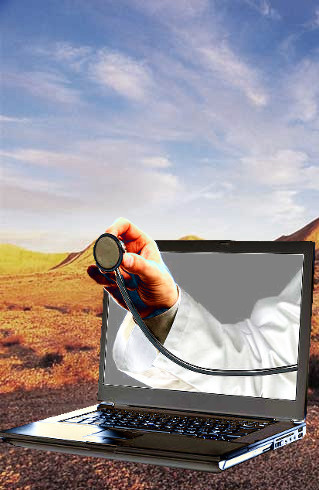Remote stroke tool saves time
 Technology is improving rural NSW residents’ access to high level stroke care.
Technology is improving rural NSW residents’ access to high level stroke care.
Every minute counts when a person has a suspected stroke, and that time is more crucial in regional areas. Having to travel long distances and a lack of dedicated specialists on the ground can make it hours before a patient receives life-saving treatment.
But UNSW Sydney has been running trials of a new system of treatment for stroke patients dubbed ‘Tele Stroke’, which connects stroke specialists in Sydney with regional hospital Emergency Departments (EDs) around NSW.
Using high quality cameras, microphones, AI systems, diagnostic scanning and imaging tools all streaming in real time over a high-speed internet connection, specialists and ED registrars can work together to quickly determine whether the patient has had a stroke, and if so, decide on the best medical strategy.
“There are two types of strokes that a person can have,” says program director Professor Ken Butcher.
“An ischaemic stroke, caused by a blood clot in an artery which accounts for about 85 per cent of all strokes, or a haemorrhagic stroke, which is a rupture of a vessel in or around the brain.
“From the outside these two may look the same – a person all of a sudden can’t move part of their body or can’t talk.
“But it’s only when we do a scan that we can work out which type of stroke someone’s having, and this analysis can now be done while the patient is still in the ED of the regional hospital, rather than hours later in Sydney.”
Prof Butcher says after using Tele Stroke to assess and treat more than 1,000 patients from regional NSW in the past 12 months, the average time it has taken for a patient to receive potentially life-saving treatment is down to 66 minutes.
“In the past, if someone presented at a regional hospital with stroke-like symptoms, the ED would do a scan and call one of the neuroradiologist doctors in Sydney and then wait for them to tell what the scan shows,” he said.
“Then, if necessary, the patient might be airlifted to Sydney – so it could be hours before they get any sort of medical intervention.
“Now the ED doesn’t have to wait for a neuroradiologist in Sydney to make their report. We have a specialist stroke-trained doctor virtually there in the ED room with the doctor and patient. They can see us, we can see them. We can talk to them and know exactly what we’re dealing with – it’s no longer a description over the phone.”
There are currently 12 regional hospital EDs involved in the project, but this is set to grow to 23 by the end of the year.








 Print
Print